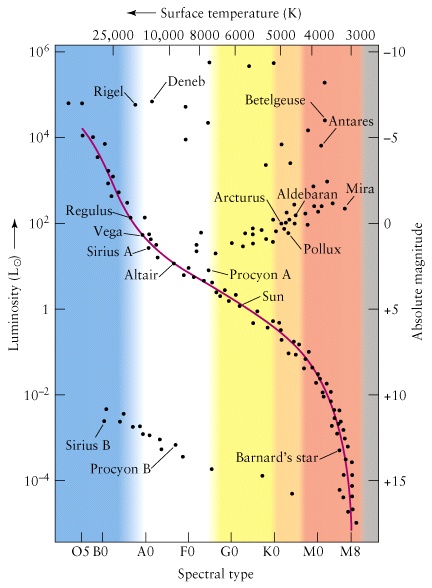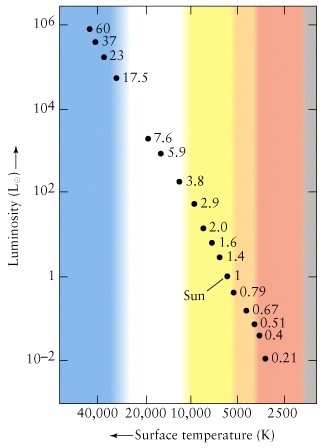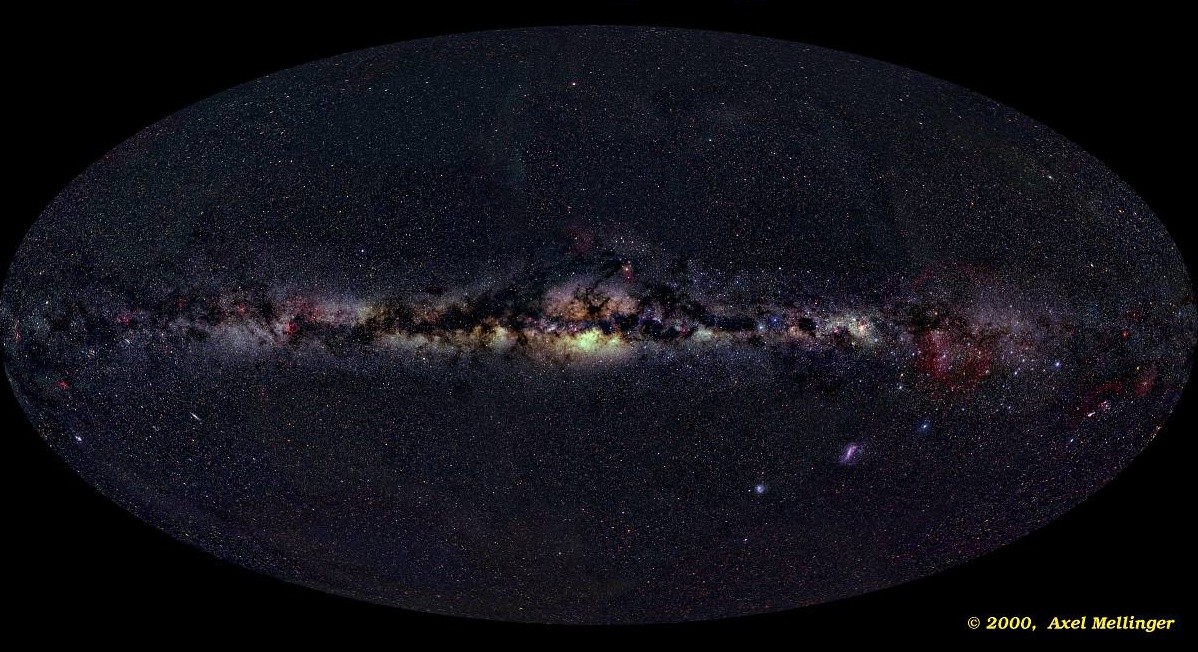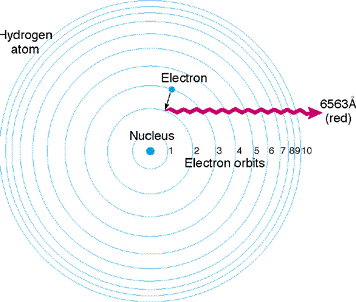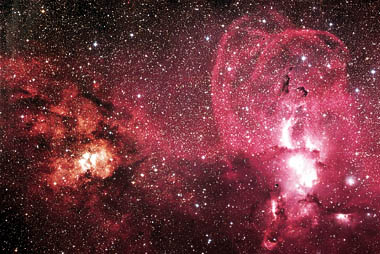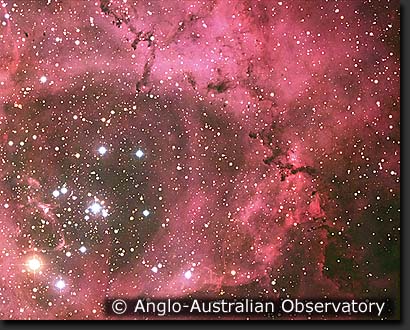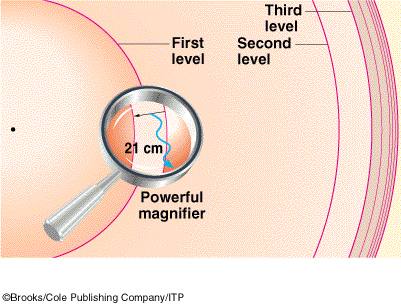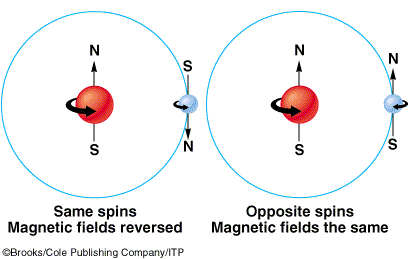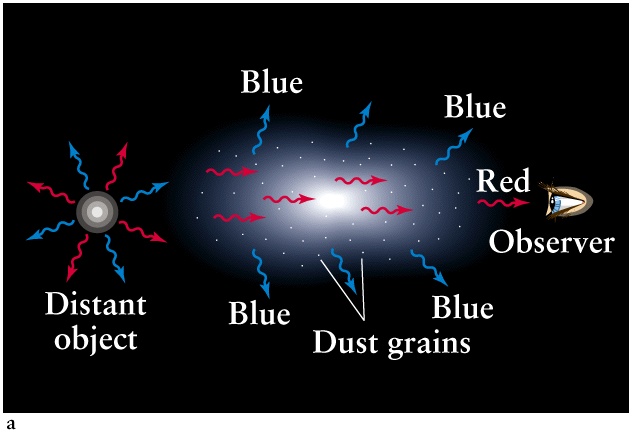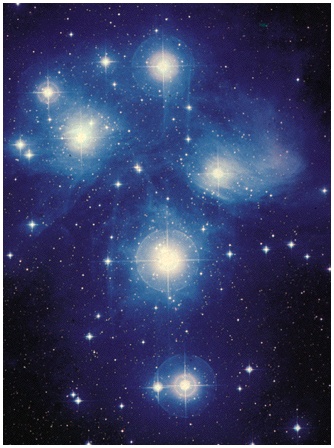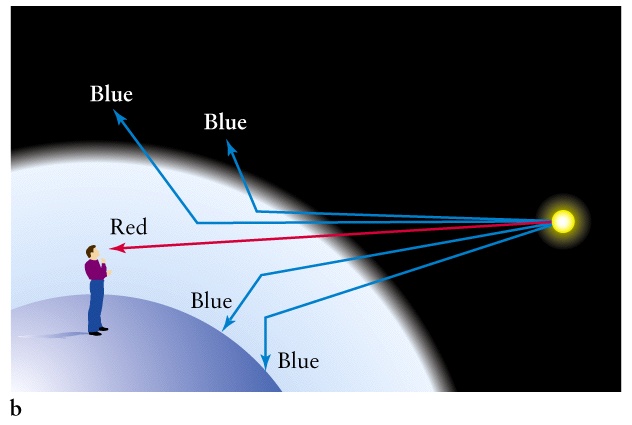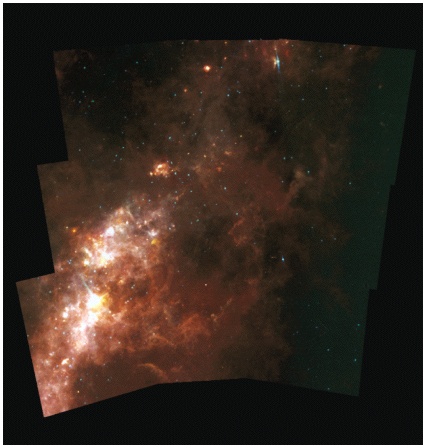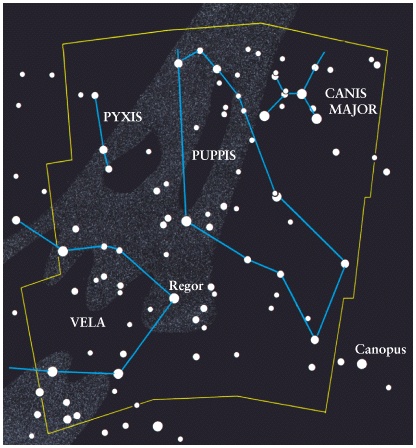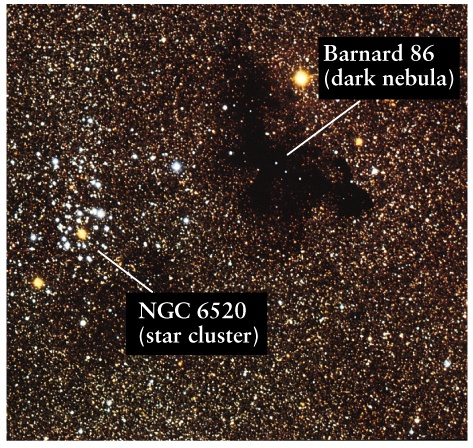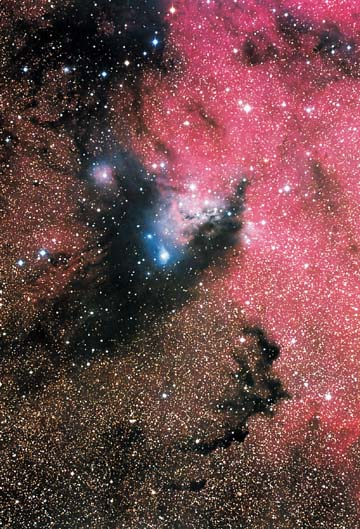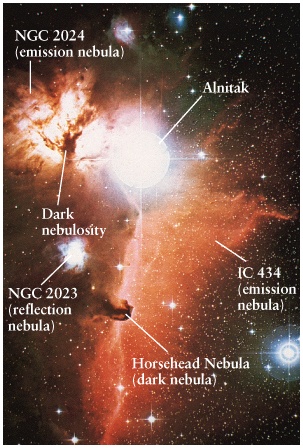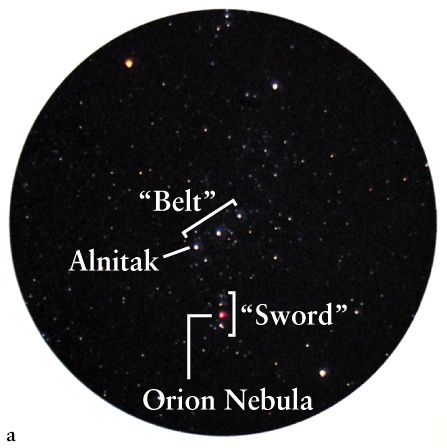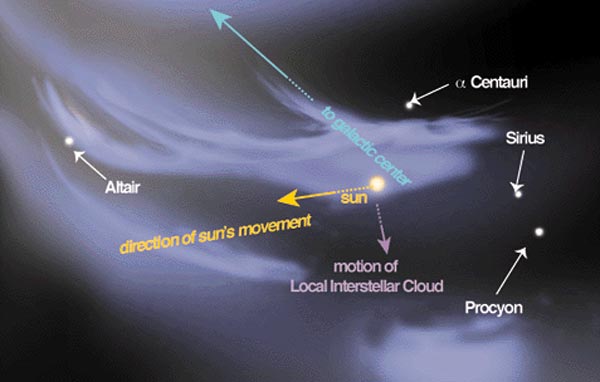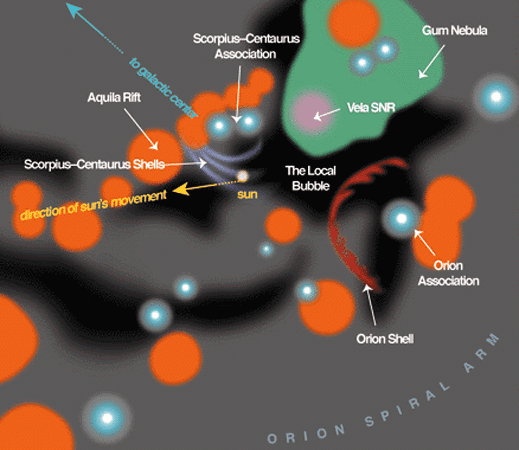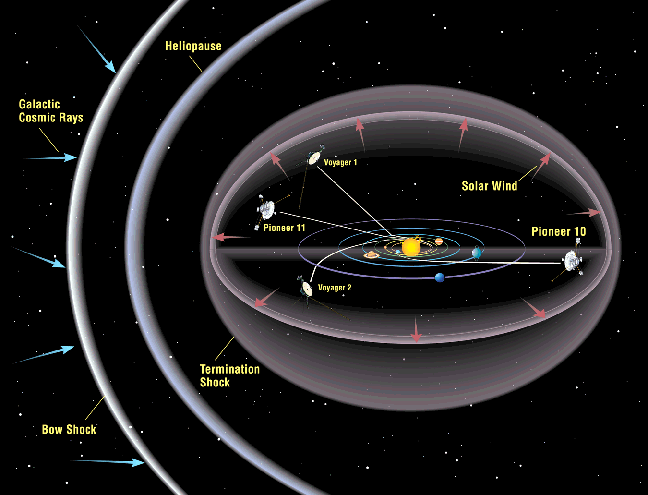Molecules
- The Interstellar Medium also has dense, cool regions where
molecules can be found called Molecular Clouds.
- Temperatures less than 100 K.
- Molecules detected include:
H2, CO, H2O, C2H5OH
and other complex organic molecules.
- Density of molecules in this room: 2 x 1025 molecules
per cubic metre.
- Density of molecules in a molecular cloud: 109 molecules
per cubic metre. (Dense by astronomical standards, but not by Earth standards.)
- Molecules have energy levels:
- When an electron jumps from one energy level to another a UV photon can be emitted or absorbed which a UV telescope can detect.
- When the molecule's spin changes a radio frequency photon can be emitted which a radio telescope can detect.
- We can detect molecules by using a radio telescope tuned
to the radio waves emitted by the molecules.
- Unfortunately, molecular Hydrogen, H2, doesn't
emit radio waves.
- Usually astronomers try to detect CO instead.
- CO emits at a wavelength of 2.6 mm.
- Typically there are 10,000 H2
molecules for each CO molecule.
|
A Molecular Cloud in the Constellation Orion
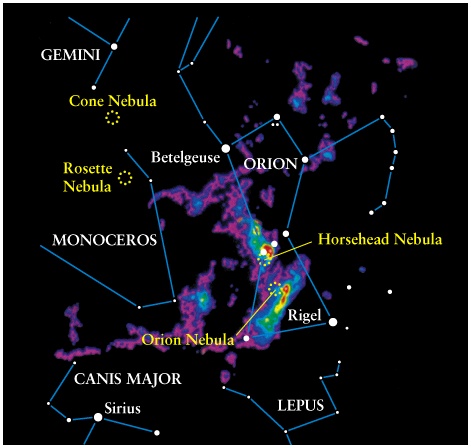 |
|
Radio "photo" showing CO emission |
|
